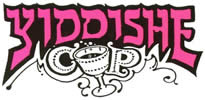MY LIFE FLASHED BEFORE ME
My life flashed in front of me. I was walking to the bank. I was at Courtland Oval at Fairmount Boulevard, when a funeral cortege went by, and right off, I knew who was in the coffin and where it was going and where it had been. It was going to the same place I’m going, some day. The coffin contained Jerry Zober (1948-2024). I knew him slightly. He was a shrink. I knew his sister, Muriel, better; we were in the same grade in school.
Jerry’s cortege proceeded from the Berkowitz Kumin Memorial Chapel in Cleveland Heights to Hillcrest cemetery in Bedford Heights. I knew all this because I had just read Jerry’s obit. The mourners’ cars had Berkowitz’s orange stick-on Jewish-flag ornaments.
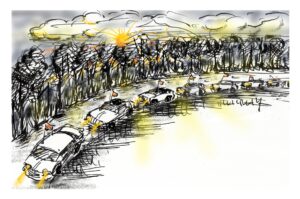
I didn’t want to get too close to the cortege because I was feeling somewhat guilty about missing the funeral. I was busy that day! And I had never socialized with Jerry. Not even once. And I was flying to New York the next day and had to deal with stuff before leaving town.
Here’s the way I appraised the situation: at the funeral parlor — prior to the service — there would have been very little time to schmooze with Muriel, Jerry’s sister. She would have been surrounded by relatives in the family-seating section. Who’s this guy Bert?
Shiva would have been great, but I couldn’t make it. I had last seen Muriel at her mom’s shiva 10 years ago. Muriel lives in Virginia. Also, I had been to the Berkowitz funeral parlor just a week prior for a friend’s aunt’s funeral. My friend lives in Israel and couldn’t make his aunt’s funeral so I repped him.
Give me a papal exemption on Jerry’s funeral, please.
I sent Muriel an email saying I was sorry I couldn’t make the funeral and shiva. She wrote back, “Thanks. I was hoping to see you. Be well.”
If you ever see my coffin going down Fairmount Boulevard on its way to Hillcrest cemetery, considering waving. Or hide. If you didn’t know me very well, please have ambivalent feelings about the whole thing.
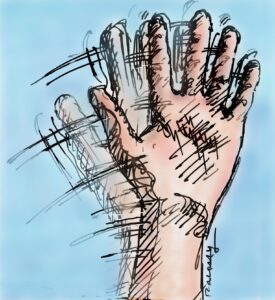
July 2, 2025 2 Comments
PLAYING FOR FREE
My wife tells me to never play for free. I do it anyway. Like the other day I played a luncheon for seniors; I did “Tumbalalaika,” “Moscow Nights,” “Fly Me to the Moon,” and klezmer. I was supposed to get a free lunch out of it, but the organizers ran out of food. Did I make a stink about that? No, I relished the slight. I went home, ate a peanut butter and jelly sandwich, and mumbled about my temporary low status.
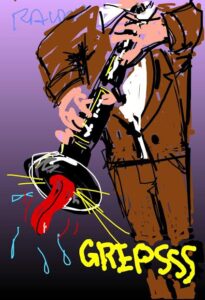 At the gig I answered my phone in the middle of a tune. A friend had called to brief me on his bronchitis. I said, “I’m playing a gig right now and probably shouldn’t talk.”
At the gig I answered my phone in the middle of a tune. A friend had called to brief me on his bronchitis. I said, “I’m playing a gig right now and probably shouldn’t talk.”
Why did I take the call? Because I was playing for free and not getting fed, so I drifted into unprofessional behavior.
“Never play for free” — Alice.
When I’m not fed at a freebie gig, I give the client what they paid for.
June 25, 2025 1 Comment
DINING WITH DAD —
AND THINKING ABOUT HIM NOW WHILE DINING
(This essay was in Sunday’s Cleveland Plain Dealer.)
The last time my father, Toby, ate out was at Wendy’s, on his way to a leukemia treatment in Columbus. My dad really liked Wendy’s. He thought he had a quasi-business relationship with the chain because he had almost invested in Wendy’s — headquartered in Columbus — before the chain got big. Almost is the key word. My dad’s near-miss with Wendy’s always topped my uncles’ near-miss get-rich-quick chronicles at Passover Seders.
I sat at Vintage India Restaurant on Detroit Avenue in Lakewood recently, thinking about my dad. My dad bought the building – not the restaurant, the building – decades ago. My family still owns the building. My dad died in 1986. I’m pretty sure Toby never ordered saag paneer in his life. Haagen Dazs, yes, but not saag paneer.
Vintage India is nothing special to look at. It has big plate-glass windows facing Detroit, and a laminate floor and drop-ceiling tiles. Bland decor, good food. The owners Ram and Shakuntla Lal do the cooking and their two adult children are servers. The son studies pre-med at Cleveland State University, and the daughter does nursing. The restaurant space, in previous iterations, was a medical-supply house, mattress store, office-supply house, furniture store and a video rental outlet called Cinema Transit. None of the businesses got the foot traffic of Vintage India. I counted more than 20 diners, plus a line of take-out customers, on a recent Saturday night.
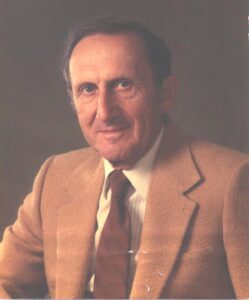
Theodore “Toby” Stratton (1917-1986). 1985 photo.
My dad knew something about restaurants and food. His immigrant mother became a part-owner of Seiger’s deli at East 118th Street and Kinsman Road, and she also ran a mom-and-pop candy store further east on Kinsman Road. One of my dad’s childhood laments was that he couldn’t try out for the track team at John Adams High School because he had to work in the candy store after school.
“Financial security” was my dad’s watchword. He started early. One summer, he worked at Cedar Point, selling corned beef sandwiches on the beach. That’s the same beach where Notre Dame football coach Knute Rockne supposedly developed the forward pass. It would be great if Cedar Point put up a plaque for my dad, maybe something with wording like, “Toby’s favorite food was a good piece of rye bread.” Chocolate phosphates were a close second.
At Ohio State University, Toby lived in the Tower Club, a scholarship dorm in a wing of the stadium. It was a bunch of guys on cots in a big room. Toby majored in chemistry and made Phi Beta Kappa. After college, he had a lot of different jobs – none of them in chemistry. The chemical industry wasn’t hiring a lot of Jews when he graduated in 1938. He eventually wound up – 27 years later — a real estate investor. He put down 8% on the Vintage-India-Restaurant-to-be building in 1965 and “carried paper,” meaning he had first and second mortgages. He loved leverage.
If my dad is reincarnated, I hope he and I go to Vintage India. Toby will definitely appreciate the Lal family’s hustle and drive. I’ll advise my dad to stick to “1” on the 1-to-10 spiciness chart. The food at Vintage India food is hot, and my dad was a Wendy’s guy.
June 17, 2025 3 Comments
THE EAR WAX MAN
He said he was the last private-practice ENT in Northeast Ohio. I found him online — called him because my ear-wax appointment at the Cleveland Clinic was for six weeks out. Six weeks out for ear wax? Ridiculous.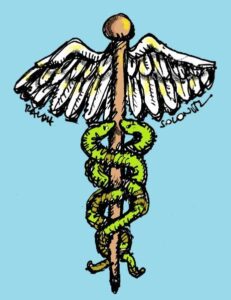
I had already gone to the CVS Minute Clinic, in Chicago no less. I went to that CVS while visiting my daughter. I thought CVS’ exploration of my ear canals would be free because I’m old (Medicare), but I got billed $100. And they didn’t get the ear wax out.
The private-practice doc in Cleveland was Bert Brown. He said, “I hope you’re B-e-r-t, not B-u-r-t.” So we hit it off. He had a hook tool that got the wax out in about 3 seconds per ear.
The balls of wax were the size of blueberries. CVS had used water spray instead of a hook. Dr. Bert said I should come back every year to get cleaned. I asked his nurse for the ear-wax balls to take home but she had already pitched them. I should have at least taken a photo. My wife would have been interested.
—
Free Father’s Day Concert: Yiddishe Cup plays 7 pm Sunday, June 15, at the Alma Theater at Cain Park, Cleveland Heights, Ohio.
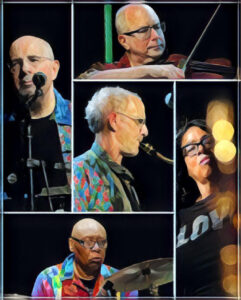
June 10, 2025 1 Comment
BOOK REVIEW: How Donating a Kidney Fixed my Jump Shot
by Jim Sollisch
You know Jim Sollisch. Or somebody like him. He’s that “gray-haired, middle-aged man in jeans and tennis shoes” (his words), hanging around Cleveland Heights. “If you ran into me on the street,” he noted, “you might guess that I was father or a husband. You might think I was Democrat or the owner of a foreign car.”
Sollisch, 67, has just published a collection of his personal essays, How Donating a Kidney Fixed my Jump Shot. How’s that for a catchy title? Sollisch is a copywriter at the Marcus Thomas ad agency and has written two Super Bowl commercials. Who else in Cleveland can say that? His side hustle is publishing op-eds in newspapers like the Plain Dealer, New York Times and Wall Street Journal. He has had hundreds of essays published the past several decades. He had an op-ed in yesterday’s Wall Street Journal about colonoscopies. [Link at end of this post.] For a while, in the 1990s, he read his essays aloud on National Public Radio’s “Morning Edition.”
Sollisch is well-rounded. He is feminine, marvelous and tough (to steal a phrase from poet Ted Berrigan).

Jim Sollisch
The feminine Sollisch . . . In high school, he badgered the administration at Cleveland Heights High into letting him take home economics instead of shop (1972). He likes to cook. He writes that he goes to various grocery stores up to four times a day to shop for fresh food. “And I was the only guy in my dorm [at Kent State] of 400 guys who ever used the kitchen. I became as powerful as the inmate with cigarettes.”
At 13 he wrote such poignant bar mitzvah thank-you notes that his recipients wrote Sollisch back, thanking him for his thank-you notes. His mother saved the notes. Nice.
The marvelous Sollisch. He donated a kidney to a co-worker. Who does that? A co-worker, not a relative. After giving up the kidney, the doctor told Sollisch he couldn’t take ibuprofen ever again, which he had regularly used to mask a sore hip. The hip — now unmedicated — started hurting so badly he got a new hip, and that improved his jump shot.
The tough Sollisch. He was scheduled to start at quarterback at Heights High his senior year, but at the last minute decided against it because he was only 5-8 and might get squashed. He stuck with basketball. He played basketball into his 60s.
The most interesting part, though, is Sollisch is a major-league kvetcher. He writes: “I hate bike riding . . , I hate summer camp . . . I hate fall, and there’s a fall phrase I detest: sweater weather.” Also, he doesn’t like bucket lists: “It’s not that I don’t like new experiences, I just like routine more. I like knowing where I’m going to have my coffee in the morning. I like not letting the grass grow too long.”
There you have it; Sollisch enjoys cutting his grass. He is the opposite of a down-and-out bohemian. Sollisch writes, “I was born here in Cleveland and grew up here, because that’s where my family lives. I own a home, I have a good job, plenty of friends [including me, writing this], and every Thanksgiving I play in the annual Turkey Bowl game on the football field I played on in junior high.” (One of Sollisch’s Turkey Bowl teammates was Steve Presser of Big Fun fame. Small world — the Heights.)
Sollisch’s essays have appeared in publications from Anchorage, Alaska, to Japan, and yet he’s Full Cleveland. He sticks to the unglamorous, to the quotidian. He writes, “I don’t live large. I get most of my clothes at thrift stores. My cat is 9 years old. I don’t dine at pricey restaurants. But I’ll tell you one extravagance I’m not willing to give up: yawning. I like to get up in the morning and yawn, really stretch my arms.”
Sollisch doesn’t write much about his advertising job, but I bet he could make that interesting. Maybe he’s waiting until he retires. Sollisch ponders what might have happened if he hadn’t gone into the ad biz. “I wonder what I might have written, what ideas I might not have censored, what risky paths I might have taken.” In other words, what if Sollisch had gone full-bore literary? Would he have deserted us for a cabin in Maine? Doubt it. He would have been an adjunct prof at John Carroll, I think.
Sollisch’s book is a 166-page collection of concise, well-written essays about a Heights man who likes to cook and hang out with his wife, children and grandchildren, and who hates certain things. He’s writing about life. Make that “life in the Heights” — although there is one essay about North Carolina, which he didn’t like.
If you want to know what your neighbor is up to, read this book.
—
Here’s a link (no paywall) to Sollisch’s op-ed in yesterday’s Wall Street Journal.
On Sunday, June 22, Sollisch gives a reading at Township Hall, 83 Main Street, Chagrin Falls, Ohio, 3-5 pm. Sponsored by Fireside Books.
How Donating a Kidney Fixed my Jump Shot is available at Cleveland-area bookstores and online at Amazon.
This review appeared, slightly abbreviated, in the June 2025 Heights Observer.
—
Yiddishe Cup plays a free concert on Father’s Day at Cain Park, Cleveland Heights, 7 pm Sun. June 15. Alma Theater.
June 3, 2025 1 Comment
PUPUSERIA
I’m not a foodie. I don’t go nuts about meals, good or bad,
but . . .
I had a bad sandwich at the Wolfgang Puck restaurant at O‘Hare Airport. Alice and I had just arrived in Chicago, and it was noon (= 1 pm Cleve time), and we thought we’d get a bite at the aeropuerto before taking an Uber to our daughter’s house. At O’Hare, the line for the Mexican place was long so I got a very crappy, expensive Puck sandwich, which was cold-cuts — “cold” as in just out of the freezer. Bad bread, too. I was “hangry.” Get over it.
Three days later — heading back to the airport — Alice and I decided to pick up sandwiches in my daughter’s neighborhood, in the city. Why did we choose Jimmy Johns? I ordered a cold tuna sub on a spongy white bread roll.
Stop complaining.
Why?
Back in Cleveland . . . We shouldn’t have stopped for dinner on the drive home from the Cleveland airport. You’re antsy to see if your house is still there. You’re tired.
We went to a hole-in-the-wall, Pupuseria La Bendicion, on the West Side. I’d never heard of it but our son Ted had, and he drove us from the Cleveland airport. La Pupuseria would have been decent but the wait was too long. “Hangry” again. I paced outside the store for 35 minutes. The pupusas were cheesy things that stuck to the aluminum- foil wrap.
Is there a lesson here?
Yes. Pupusas are the national dish of El Salvador.

May 27, 2025 1 Comment
THOSE WERE THE DAYS
My friends and I go back to K-thru-6. You might think that’s odd, but only if you’ve never lived in Cleveland. My buddies and I all grew up in bungalows in South Euclid and went on to Ohio State, except one guy went to Miami (of Ohio). We were Zeebs (ZBT) in Columbus. A couple Sammies.
Mr. Miami U. — the outlier — called me the other day for a loan, like I’m the loaded-guy in the bunch. Maybe I am. Who knows. We’ve all been reckless with money. I like Mountaineer Casino in West Virginia, and have no problem traveling to Vegas multiple times a year. Do you remember my dad? He loved the ponies and bet football. He also liked Raisinets, as do I.
Mr. Miami U. is being evicted, as we speak, from his apartment; he hasn’t paid his rent in four months. I said to him, “You’re ahead, man. Four months’ free rent!” What kind of idiot landlord lets a tenant fall four months behind in his rent? Maybe that’s how it’s done in California. My friend is in Los Angeles. Before that, Massachusetts. I said, “You’re so broke and yet you’re living in the second most-expensive city in the country!”
“That’s why I’m broke — L.A.,” he said. “My old lady insists on staying out here.” (His third wife.) “She likes the weather.”
“Go back to New England.” I gave him $500, straight out. “It’s tzedakah, not a loan.”
Then a couple days later he called and wanted $1500 more. He said, “I’m going to an extended-stay hotel tonight. The bailiff is coming any minute.” I declined on the $1500. Where are his grown children and his two brothers in all this?
Fact: my friend deserted Cleveland and that costs. The internet says he’s an “emeritus professor of educational studies” from Farkakte U. in western Massachusetts. He’s smart, but not that smart. I’m as smart him! He definitely has played a few too many World Series of Poker.
I’ll stick with my low-stakes poker game here in Cleveland. We’re going to keep playing until we’re all in Bet Olam Cemetery, and we’ll keep playing there, too.
My kids live out of town. That hurts — the kids and grandkids out of town. Do you remember when all your friends and cousins lived within five blocks of each other, and Mom called out the door, “Be home before dark!” Remember biking to Little League? Those were the days. We thought they’d never end.
“Those Were the Days” — the song — I hear it frequently. A friend from third grade (1958) has a klezmer band here. The music all sounds the same to me, except he’ll occasionally throw in something recognizable, like “Those Were the Days.”
I recognize it.
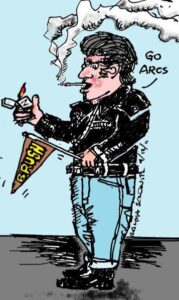
Ralphie, the only Jewish greaser at Brush High in 1968. The rest of us were collegiates.
—
fiction
May 20, 2025 No Comments
MY MOTHER SENT ME
A LETTER ABOUT DOPE
(From the Sunday Cleveland Plain Dealer, Mother’s Day).
My mother sent me a letter about dope. This was my freshman year of college. The fifth floor of my dorm was called the “dope floor.” You name it, we had it: heroin (“scag”); marijuana (“grass”); and cocaine. Some guys even sniffed gasoline from cars at the nearby parking structure. That was called “hitting the tank.” Many of the heavy dopers eventually dropped out. This was at the University of Michigan, where the Hash Bash – a celebration of marijuana – started.
I got harassed for non-toking by my dormmates. I was a mama’s boy. The boys on my floor couldn’t believe I didn’t partake. Two inner-city Detroit boys, in particular, were quite often amused by me, calling me “Expletive-deleted Bert!” and ”Bert be trippin’. That Expletive-deleted be trippin’. You be trippin’, Expletive-deleted!”
The Detroit boys were charismatic. They wore berets and used a lot of Black slang. They wore silky colored underwear and put Vaseline on their skin in the winter. This was all new to me – a white kid from South Euclid. The Detroit boys were from Cass Tech, a Detroit science-magnet high school. They were pre-med, like almost everybody on our dorm floor. The Cass boys aced inorganic chemistry that freshman year. But they did too much dope. That was a problem. The Cass guys were gone by sophomore year.
Tune in, turn on, drop out. Many did. The Jewish boy from New Jersey stopped studying altogether and giggled a lot. It seemed like he was high almost every waking moment. He dropped out and drove a cab around Ann Arbor. The Italian boy from Chicago dropped acid, dropped out and became a brakeman in Chicago, in imitation of Jack Kerouac. I saw the Chicago boy a couple times after college. His primary concern was passing the periodic railroad-mandated drug tests.
My mom wrote me regularly. (Phone calls were expensive back then.)
Here’s her letter to me from October 1968.
Dear Bert,
We had a wonderful visit with you last weekend. It was great seeing you and finding that you haven’t changed — you’re still the same old nudnik that we love! Still, I have a worry. I only wish I could express myself well on paper so I could be sure to reach you.
Bert, you’ve always had a strong will and mind of your own. I’m praying that you use your good judgment and not be swayed by good fellowship and badgering. What I’m leading up to is this: marijuana. I’m not sure, but isn’t that the same thing as pot? Whatever it is, it scares me. What does it do for you? You don’t need pot to tell you it is a beautiful day. From the time you were a child, it has always been a pleasure to go places with you. You were the first to see the horses, the water, the points of interest.
You have the makings for a wonderful, happy life. You have it in yourself. Keep it that way. Don’t let the boys tease or try to shame you into doing something you don’t need and know isn’t right.
Love and Kisses,
Mother
That was 57 years ago. I confess, I smoked marijuana the following year and periodically after that. But not that much. I never bought, Mom! And I haven’t toked in decades. (My mother, Julia Stratton, died in 2004.)

Julia Stratton, 1967, age 47.
May 13, 2025 4 Comments
SHE CALLED THE CITY ON ME
It was cold in her apartment. But did she have to call the city on me? It was September and the heat was hard to regulate. (Fall is the hardest season because the outdoor temperature fluctuates so much.) She hadn’t paid her rent, either. It was the 20th of the month. Also, she bad-mouthed my building manager and ripped down curtains in the hallway.
Bad stuff. But I could handle it, except her calling the city on me. She was way-late with the rent, yet she felt she could drop a dime on me?
I first rented to her 10 years ago, at another building. I didn’t remember her other than I had marked “late payer” on some notes I kept.
. . . I’ll wait her out and not renew her lease. Just five months to go. Or better yet, she doesn’t cough up the rent this month, and I evict her.
Now she’s texting my onsite manager: “You’re too old! I don’t like your tone! And the way my rent gets paid is none of your business!”
Now she says she’s moving. Yes.
Nope. We go to court.
She tells the magistrate she has medical problems, and she tells me she has been laid off from her schoolteacher job for hitting a kid. “It isn’t true,” she says. “But it’s in court, so I can’t get another job.” The magistrate gives her five days to move out. Her son is up from Florida, and he guarantees she’ll be out.
“I’ve never been late,” she says to me.
“You’ve never been on time,” I say. (I keep my cool. I’ve been listening to Sam Harris’ meditation app.)
She’s still here. Five days later. She says, “My son has arthur-itis and is in pain, and it’s raining. I’ll be out by noon tomorrow.”
“We go to court at 11:30 am tomorrow if you’re not out by 10 am,” I say.
She says, “I was telling the kids to put away the toys in class and I tapped one with a toy, and then this boy, Armani, started crying and said he got hit on the head, and he went to the office. I got escorted out of the building. It has ruined my life.”
She has a record; the City of Cleveland criminal docket has all the particulars. I don’t usually look at Cleveland, because most of my action is in Cuyahoga County Common Pleas and the city of Lakewood. She has evictions, traffic violations and the school-related assault case.
“I’ll be out by 10 am. I’m a good person,” she says.
Today. 10 am. There’s a U-Haul truck in the alley. I’ll wait her out. No court.
5:03 pm.
She’s gone.
Note to self: Don’t rent to her a third time.

Down and out in Lakewood, Ohio
—
Yiddishe Cup plays a free concert 2-3 pm Sunday (May 11). Mother’s Day. Beachwood, Ohio, library. Corner of Richmond Road and Shaker Blvd.
May 7, 2025 No Comments
A PAIN IN THE THUMB
I went to the Cleveland Clinic for tendinitis, caused by playing clarinet too much. The pain started in my right thumb and then went all over. The doc told me to bring my clarinet to the appointment. He was a violinist and regular attendee of the Marlboro Music Festival. He was a neurologist with a side hustle — music-related injuries.
The doc quickly shipped me off to a PT — the real fix-it person at hospitals. The PT was good. He said, “You can’t stop playing. You’re a professional.” Right on.
But my thumb was not good (although it did eventually get better in a year and a half). I don’t know why it got better. I even drove down to Cincinnati to see a doc there who specializes in clarinet players. You do extreme things when, say, lifting a coffee cup feels like a bag of potatoes.
Cincinnati didn’t help. Musculoskeletal problems — they’re hard to put a finger on. An older friend said, “Just wait until your internal organs go.”
Waiting . . .
April 30, 2025 1 Comment
HOW DO YOU GET TO
CARNEGIE HALL?
I was on stage at Severance Hall (home of the Cleveland Orchestra) this month. My first time. Then I got kicked off.
I was at an Itzhak Perlman concert, featuring klezmer music. One of Perlman’s sidemen told me to come on stage post-show to chat. He was packing up his tsimbl. Then a security guard shooed me off. No biggie. I’ve played Severance Hall before.
The Severance Hall lobby. For a wedding.
Yiddishe Cup’s keyboard player, Alan Douglass, has played Carnegie Hall.
The Carnegie Hall Cinema. Alan accompanied Laurel and Hardy shorts at the Carnegie Hall Cinema in 1985. Alan was in the Kleveland Klezmorim at the time.
At Severance Hall, there was a line backstage to talk to Perlman. I was more interested in connecting with Perlman’s sidemen. These sidemen are my heroes. For instance, Perlman’s klez-music director, Hankus Netsky, has influenced me, for the better, for the past 37 years. I first ran into Hankus at KlezKamp (the late, great, annual Catskills-based klez convention). Hankus was on staff at KlezKamp, and I was a student. KlezKamp was a little “scene” — a veltele. There were nametags, workshops, break-out sessions, dance concerts.
Perlman’s Cleveland concert was sold out. Half the audience, it seemed, was there to see Perlman-the-classical-violinist and didn’t realize the show was going to be hardcore klez. Perlman’s sidemen were Pete Rushefsky, Andy Statman, Ilene Stahl, Judy Bressler, Lorin Sklamberg, Michael Alpert, Frank London, Jim Guttman and Netsky, among others.
I told clarinetist Andy Statman that I occasionally play his evocative “Song of Redemption,” and I told bassist Jim Guttman about a KlezKamp photo he and I are in from 1987. Guttman is in a lot of KlezKamp photos. Doubt he was interested in my pic.
Guttman once told me his favorite gigs are nursing homes because the audiences are so appreciative. Great. (I play my share of nursing homes.)
How do you get to Severance Hall?
The Severance Hall stage.
Go to a klezmer convention. Here’s my badge:

—
Henry Sapoznik and Adrienne Cooper founded KlezKamp, which ran from 1985 to 2015. My family attended about 10 of these gatherings.
KlezKanada — another annual klez convention — still exists. And there’s a thing called Yiddish New York, which happens around Christmas in NYC, but there’s no hotel where everybody stays.
Yiddishe Cup’s violinist, Steve Greenman, taught at KlezKamp.
Greg Selker started the Kleveland Klezmorim in 1983. My wife, Alice, encouraged me to attend Greg’s klez workshop at the Cleveland Heights JCC in 1987. Greg had met Hankus Netsky and trumpeter Frank London at the New England Conversatory.
April 23, 2025 3 Comments
I USED TO BE A RABBI
I wasn’t always this religious. I used to be more religious. I first started going to shul regularly right after college. I was a paralegal at the time. I thought I was going to go to law school. I worked at this firm called O’Connor, Joseph and Welch. I got my birthday off (St. Patrick’s Day) because of O’Connor, and Mr. Joseph didn’t mind I wanted two days off for Passover. One night, in the office after-hours, I decided to answer an incoming call, trying to be helpful. I said, “O’Connor, Joseph.”
The phone caller said, “Do you know who I am? I’m Welch and I hate it when people answer the phone ‘O’Connor, Joseph’!”
I said, “Do you know who I am?”
“No.”
“Good.” I hung up and quit. Screw lawyers and their big egos. I enrolled in a non-denominational rabbinical school in Boston. I learned Hebrew; I studied Talmud; I spent a year in Israel; and all that time I was playing clarinet and saxophone. People started calling me “the jazz rabbi.” Fact: there’s an actual “jazz rabbi,” Greg Wall, who lives in Connecticut and is 10-times better than me on horns. Make that 100-times.

I eventually got a job at a Jewish nursing-home complex in Cleveland. I led services, played some jazz standards and “Hava Nagila,” and did some grief counseling. But the job wasn’t that satisfying. I wanted to engage in deeper “shrink”-style counseling. I wanted to meet up with Jews-on-the-go behind closed doors and hear all their secrets. I wanted to discuss high-stress moments: birth, life, marriage, divorce, death, tennis. (I play tennis with a rabbi. The guy kicks my ass.)
I never did become a pulpit rabbi. I applied for six synagogue jobs and got one half-baked offer — not a real pulpit. The Hillel in Norman, Oklahoma. I didn’t want to hang out with kids.
I got no decent job offers because I had too much hate in me, and that, no doubt, came across in my job interviews. For one thing, I was obsessed with Nazis at the time and wanted to stomp them. (I was about 35 years too late.) My hero was Abba Kovner, the Vilna ghetto fighter. I even attended — almost daily — the Demjanjuk trial in Cleveland, and that guy wasn’t even a Nazi, just an adjunct.
I went into real estate. That, as it turned out, was a perfect fit.
—
fiction
The “O’Connor, Joseph” anecdote comes from an actual rabbi, Joshua Skoff.
[illustration by Ralph Solonitz]
April 16, 2025 2 Comments
MY RELATIONSHIP WITH THE IRS
My latest essay in the Cleveland Plain Dealer . . .
CLEVELAND HEIGHTS, Ohio — I want to be more than just another number with the folks at the Internal Revenue Service. I write “landlord/bandleader” in the “occupation” blank on my taxes. Maybe the word “bandleader” piques somebody’s interest at the Cincinnati IRS processing center. Maybe “bandleader” conjures up Benny Goodman or Jon Batiste and makes an IRS worker’s day more interesting. Or maybe nobody looks at my returns in Cincinnati.
In the 1980s, I had an in-person audit. I went to the downtown Cleveland federal building solo, without a lawyer or accountant. I knew about taxes. My father had taught me. He didn’t teach me how to fix cars, but he did teach me how to fix taxes. My dad used to keep two sets of books — one in pencil and one in pen. He gave the government the pen version (with creative math), and he kept the pencil version (with the real numbers). My dad had grown up on Kinsman Road during the Depression and was a self-made man.
The auditor didn’t find anything wrong with my taxes. That’s how the second generation often rolls: legit numbers. The auditor gave me an $80 credit for some “supplies” I had forgotten to claim.
I think about taxes. Not just in April. Taxes are interesting.
Here are some tax pointers for this season:
Schedule C/Business income: The government looks closely at sole proprietors’ expenses. As a bandleader, how should I list the candy bars I buy for my sleep-deprived, van-driving keyboard player? For instance, are his Milky Ways a “meal”? Or are they just “maintenance”? What if my drummer wears a bright-red suit on stage? Can he deduct the suit — and the dry-cleaning costs — as a business expense? Yes. But if he wears the suit offstage, as well — in real life — then, no deduction. It’s just a suit.
Qualified Dividends: Every year, I try to remember what qualified dividends qualify for. (They qualify for lower capital-gains tax rates.)
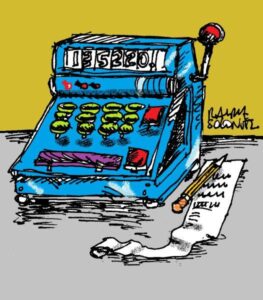
Schedule D/Capital gains and losses: In 1977, my wife-to-be, Alice, bought a couple shares of a Vanguard mutual fund. Did anyone other than Alice and Vanguard’s founder, John Bogle, own mutual funds in 1977? A smart business move — me marrying Alice.
Supplemental income and loss: Income from royalties and rental property are reported on the same Schedule E form. Why are such different sources of income on the same form? Are there many more “landlord/bandleaders” out there than I know about? I know an accordion player from Parma who owns a shopping-strip center on the West Side. I don’t know any other musicians collecting rent on the side. The most my band ever received in royalties was $45.56. That’s why I own rental property.
Depreciation/Form 4562: Buildings have different life expectancies than, say, people. Apartment buildings fully depreciate in 27½ years. Commercial buildings (like shopping strips) last 39 years. You don’t need to know that, unless you’re me.
Self-employment tax/Schedule SE: The tax on Social Security and Medicare is effectively 15.3% for a self-employed person. A salaried person pays only half that — 7.65%. That’s worth pondering about, if you’re a self-employed, small-business owner.
Maybe I’ll make somebody’s day in Cincinnati this month. I try to make my tax returns interesting. Just not too interesting.
—
(Illustration by Ralph Solonitz)
April 9, 2025 No Comments
TRASH
Waste Management wants $2035.24 for taking away my old dumpsters. I rent the dumpsters for trash removal at my apartment buildings. I’m on a lease. (Landlords can be tenants!)
I’ve used WM for 13 years. Do they still love me? No, they regularly overcharge me, assessing extra charges (“overages”) because my dumpsters are too full.
I think I’ll take my dumpster needs and talents to Rumpke. Ever heard of them? Fun name. Rumpke is a regional company, out of Cincinnati. Rumpke say they won’t charge me overage fees or removal fees when my lease is up.

But what to do about the $2035.24 the gonifs in Chicago (WM’s HQ) want? Two grand to take away my 11 dumpsters? Should I ignore Chi? Maybe WM will forget about me. WM is huge; there are even WM dumpsters in Japan; I’ve seen it in the movies.
Garbage haulers and coin-op laundry guys . . . they’re all originally Mob-related, started decades ago. I remember a coin-op laundry operator from Chicago trying to turn me into an indentured servant. It was almost impossible to get out of the contract with them. (“Coin-op” refers to rental washers and dryers in my buildings.)
I’m not thrilled about sending $2035.24 to Carol Stream, Illinois. Is that a real town or just a Mob post office in the middle of nowhere?
—
Update: WM didn’t forget about me, and I paid half, $1017.62. Matter settled.
April 2, 2025 2 Comments
THE BOOK THAT DOESN’T EXIST
I got an email from a literary agent: “Just read your op-ed in the New York Times and have spent the past couple hours reading everything you’ve written. Your op-eds are rooted in your personal experience, yet have universal appeal.”
Nice! Do I write a book about real estate? And then I would lecture at the Cleveland JCC Jewish Book Fair and sell product. But the writing game is so formidable, so competitive, even locally. How many more books does the world need? A thousand? Have you read Bart Wolstein’s Crossing The Road to Entrepreneurship or Maury Feren’s Wheeling and Dealing? These authors were both Clevelanders who died shortly after self-publishing. Simon’s book is about real estate and Feren’s is about selling vegetables.
Veggies. Why not. How about french fries? My son Ted was astounded in 1990 when I gave up french fries at the Fort Erie, Ontario, Burger King. I said, “No more greasy fries.” We were on our way to Toronto to see the new Blue Jays stadium.
Chicken . . . I often wound up at the KFC on Shattuck Avenue (a hangout with absolutely no countercultural status) when I hitchhiked to California in the 1970s.
KFCs are hard to find lately. Where did they all go?
A burger book? Sonic Burger, In-N-Out, Steak n Shake. What about Arby’s — the non-burger? I liked Arby’s roast beef sandwich with Arby’s Sauce. And add a Jamocha shake. In Cleveland there was an Arby’s knock-off, Beef Corral (a k a Barf Corral), owned by the Modzelewski brothers, former Browns players.
When my daughter Lucy was little, she designed a coat-of-arms for me that read “No Fries.” That’s my legacy unless I crank out a real estate book.
The real estate book . . . in 2016 I wrote a proposal, outline and sample chapter, and my lit agent got no takers for the project. Here are some sample chapter titles from the proposal: “Build an Ark: this place is flooding,” “Booms, bubbles and cash flow,” “We have standards,” “Job #1: get the money in the bank,” “Gotta serve somebody,” “Pull the trigger,” “Never on Sunday (because the tradesmen are on their boats in Lake Erie),” “Quasi-Legal Advice,” “Renting the American Dream,” “Jazz and Real Estate.”
I wouldn’t entirely rule it out, the real estate book, just yet. Or some sort of book. AKs like me like to self-publish about french fries, burgers, real estate, whatever.
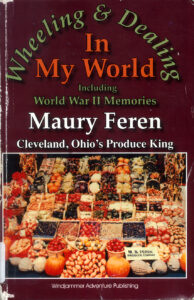
March 26, 2025 5 Comments
THE FUNNIEST RABBI
IN CLEVELAND
I ran into a funny rabbi the other night. Happens. Some rabbis are funny. Rabbi Matt Eisenberg told me he is the “second funniest rabbi in Cleveland.” Why number-two? He explained he came in second in Cleveland’s Funniest Rabbi Contest in 2011. Fourteen years later, he’s still funny. He did a clever Purim shpiel based on Fiddler on the Roof.
I was a judge at the funniest rabbi contest once, but not the year Rabbi Eisenberg participated. I was a judge a couple years later. The winner that year wasn’t even a rabbi. The funniest rabbi in Cleveland in 2013 was a doctor/mohel — Kiva Shtull.
The judges made comments after each rabbis did their shtick. We rated the ravs. Afterward, an audience member said to me, “You were very nice in your comments.”
Why not? Author Theodore Dalrymple wrote (about “comedian” Boris Johnson of England), “Telling a joke that falls flat is an excruciating social experiment.” Telling original jokes, non-stop, in front of 200 people at the Schmaltz Museum of Jewish Heritage — that’s not for the faint of heart or your typical pulpit rabbi. I had stocked-piled complimentary adjectives in advance. My arsenal was droll, gut-busting (didn’t use that one), cheery, sharp, zany, wacky, witty and perturbing.
Nobody was perturbing, unfortunately.
I gave the highest rating to the mohel, who moonlighted as the spiritual leader of Congregation Shir Shalom in Bainbridge Township, Ohio. He got wry, droll and zany. (The shul went under about a year later. I don’t know why.)
I just rediscovered a video of Dr. Shtull’s comedy routine. It holds up, at least for the first couple minutes. I’m not sure if Rabbi Eisenberg — the second funniest rabbi of 2011 — has a video. Probably. But check out Shtull’s shtick. Listen at least till you hear the word Chabad — around the two-minute mark.
March 19, 2025 2 Comments
GROW UP
I put a latch on my bedroom door to keep my parents out. I was a grown-up — in my early twenties. I was at my parents’ Beachwood apartment, the Mark IV (featured a couple weeks ago in a Klezmer Guy post). The Mark IV was later called The Hamptons and is now The Vantage. I was listening to John Handy’s “Don’t Stop the Carnival” on my record player. There was talk about real estate and bridge games. I pondered some prospective book titles:
Suburban Nightmare
Rebounding from the Bar Mitzvah Trail
Confessions of a Bar Mitzvah Wino
He played Clarinet Between his Legs
Unstuck Pads
The Bar Mitzvah-Goer
Maybe I thought about bar mitzvahs because I never had one. I was Confirmed, Reform-style. (In my adulthood, I did leyn Torah a couple times.)
I swam in the Mark IV apartment pool and got in an argument with an old guy — maybe 65. He said, “You’re going to bump into my grandkids and you’ll be sorry you did!”
Lay off, man. (I love grandkids — 50 years later.)
My dad considered selling me his beater car, a Plymouth Valiant, so I could drive away from Beachwood. He said, “But if you get the car, what are you going to do to support it?”
“I’ll get some money somewhere. I’ll rob a bank.”
“You do that and I’ll wipe my hands of you!”
Simmer down, Dad. I bought the car, but I didn’t drive too far. I went four miles west to Cleveland Heights and rented a room in half-a-house.
Where else could I have gone? Boston was too collegiate. New York? I had been there and had had my ride towed. New York is a tough town for cars. Go back to Ann Arbor? Too many kids there. California? Too hard to get to.
Tough times . . .
My dad said, “You don’t know what a tough is!”
Change your place, change your life. I met a girl via the ride board at Case Western Reserve University. (A lot of my life revolved around that CWRU board.) The girl was Jewish, cute and English. A true trifecta. We hitchhiked to California, and somewhere near Knoxville she told me she was going to meet up with her boyfriend in California. Bummer road!
Because of the “chick” factor, we even got rides from truckers.
I ran into the English girl again, in Israel a year later. She said nothing had materialized with the “boyfriend” out west (and nothing much happened with me and her in Eretz Yisrael).
California . . . I said cheerio to the English woman and hitched back east solo. When I walked into my parents’ apartment, my dad said, “Isn’t that a pistol.”
I guess it was. As Isaac Bashevis Singer wrote, “Life was too good to us. We had to ask for trouble.” I looked for trouble, somewhat unsuccessfully.

Isaac Bashevis Singer
March 11, 2025 6 Comments
BURY ME AT HORSESHOE LAKE
–A FAREWELL TO AN OLD FRIEND
(This essay was in the Cleveland Plain Dealer on Sunday.)
Even if you’re rich, you can’t always get what you want. For example, you can’t buy Horseshoe Lake, which straddles Shaker Heights and Cleveland Heights. An assortment of neighborhood high-rollers, medium-rollers and salt-of-the-earth ex-hippies tried to save Horseshoe Lake. These lake-lovers funded lawsuits against the cities of Shaker Heights, Cleveland Heights and the Northeast Ohio Regional Sewer District.
We fought the law and the law won.
I was a founder of Friends of Horseshoe Lake. We paid for the lawsuits and an engineer’s evaluation of the defunct dam. We wrangled a couple thousand signatures on a petition to save the lake, but not enough people cared.

Horseshoe Lake when it was a lake. (Photo by Lucy Stratton)
The Sewer District is going to turn the former lake — which was drained almost six years ago — into a boardwalk and nature preserve. They plan to rip down some trees and put in a paved service road. Is the road a homage to the never-built Clark Freeway that the county wanted to put through the Shaker Lakes area in the 1960s?
I have a friend who lives a mile from Horseshoe Lake. He lives near Lower Shaker Lake. He said, “I have my lake. I don’t care about yours.” The notion of NIMBY (Not in my Backyard) doesn’t travel well; you get about a mile from the Horseshoe Lake, and not that many people get worked up about its disappearance.
Granted, there are more pressing issues than Horseshoe Lake, like crime, housing matters and leaf blowers. But how many boardwalks and little playgrounds do we need? We already have the Nature Center at Shaker Lakes. Even a “lake feature” is lacking at the upcoming Horseshoe park. The Sewer Board is spending $28.7 million – up from the original $14 million – and that doesn’t include another $8.6 million for amenities, which supposedly Shaker Heights and somewhat-financially-strapped Cleveland Heights are expected to cover.
The Sewer District and the Ohio Department of Natural Resources claim the goal is to prevent a flood disaster downstream in University Circle. Nobody has died from a flood there, but you never know. Every hundred years a person might die in a storm under the Cedar Road Rapid tracks. And I might get hit by a bus tomorrow.
I live about a football-field away from the late great Horseshoe Lake. I used to live several miles away and visited often. Horseshoe Lake was calming. It was blue and serene. I couldn’t bike out to Lake Erie that often; that’s a six-mile schlep from Cleveland Heights. The Metroparks aren’t too close to the Heights either. Speaking of which, our lawyer talked with Metroparks’ people, and the park system wasn’t highly motivated to save Horseshoe Lake. On a stroll around the Heights, I ran into retired Cleveland city planner Bob Brown. He said he thought the Sewer District’s plan for the Horseshoe area “doesn’t look so horrible.” I hope Bob is right.
In winters I used to walk across the frozen lake. There were signs posted against it, but the water wasn’t that deep, and I figured if I fell into the lake. it would be a classy exit. Now what can I fall into? A playground amenity? No, thanks.
March 4, 2025 No Comments
YOU CAN GO HOME AGAIN

The Mark IV apartments, Beachwood, Ohio
I’m at my parents’ apartment near I-271. So loud — the highway. I’ll hitch down to Cedar-Taylor to get some air.
I’d like to see Sleeper and American Graffiti.
Cleveland . . . it makes one stop and think. I’m thinking of Boston and New York.
The history of the Jews. My parents grew up in the Kinsman neighborhood. Ezra lived in Babylonia.
How do you get the girls if you don’t go near them?
I left my heart in Sandusky.
My friend Chap drove his Corvette up and down Mayfield Road with 11 other Corvette drivers. Chap has a 350-hp engine with headers, minus emission controls.
I saw Sleeper. I resented the Jewish stereotypes.
Stan Smith vs. John Newcombe.
Never write about a place you haven’t done time in. And detail-for-detail-sake is useless.
I don’t want to live here.
—
Recap:
My dad said, “I’m sure you’ll be a success some day.”
At what? Whatever, I should do a good job of it. My father never said to me, “What are your plans? What do you see yourself doing in ten years?” That would have been cruel.
My post-college days were hell, but not that hellish. My mother lined up blind dates for me. The dates were usually with daughters of my mom’s friends. I took the girls to bars and restaurants and ordered 7&7s. That was my booze repertoire: 7&7.
Then I got feedback about the dates from my mother, who picked up tidbits at bridge games. Some of the girls liked me, some didn’t. One date thought I was “a little weird.”
She was weird. She had no business dragging me through her dad’s kangaroo court (his living room had World War II medals on the wall). What are my plans? What do you do?
What’s an apricot sour? That’s what the girl ordered at the bar.
Chap asked me to go to the Corvette rally at Manner’s Big Boy, Mayfield Heights. He had a brand-new 1974 ’Vette. He said, “You think you’re too good for my ’Vette, Stratton. You’d prefer a VW bus with a hippie slut. Why not try real chicks and real cars . . . Friday night at the Strongsville Holiday Inn, it’s crawling with chicks and ’Vettes. No, you’d rather be in Cleveland Heights. Any city that has a bumper sticker like that is a losing proposition.”
When my sentence (nine months) at the Mark IV was up, I moved to Cleveland Heights, into a double, sharing it with three guys I met off the Case Western Reserve rooms-for-rent bulletin board.
I’ve been in Cleveland Heights ever since, and I haven’t seen Chap in more than 35 years. He doesn’t hang around klezmer concerts, for one thing. Alice knocked on the door of the Cleveland Heights double in 1977, looking for a room to rent. Mom’s Dating Service, RIP.
February 26, 2025 4 Comments
SHOULD I RENT TO A STRIPPER?
This acclaimed animation is from the guys over at Challah Barbaric. The vid (below) may seem, at first glance, to be navel-gazing. It’s not. It’s magic. The two main characters — a sleazy guy and a bug-eyed naïf — turn the cutthroat world of real estate into something warm and fuzzy and slightly erotic — or robotic.
The landlord in the vid is so pompous at first. Then more so. The plot twist: the young lady draws forth the landlord’s humanity and even a Peter, Paul and Mary lyric.
Should I rent to a Stripper? 2:57 minutes. United States . . .
February 18, 2025 2 Comments
